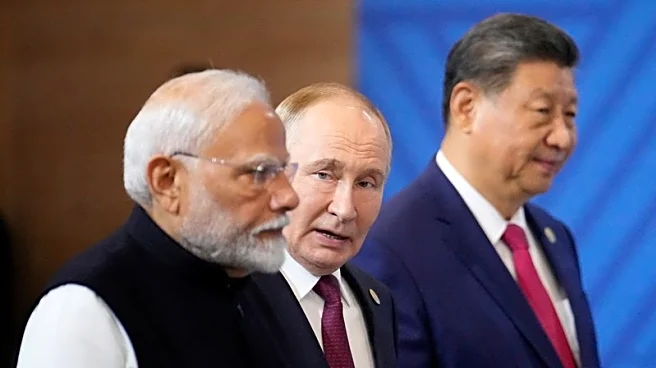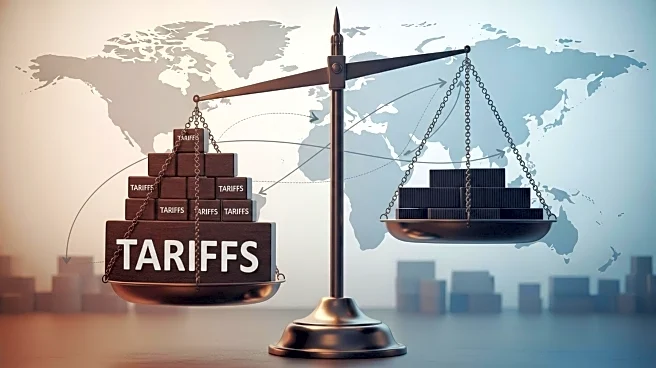What's Happening?
From 2023 to 2025, geopolitical risks and political instability have significantly influenced the U.S. urban landscape, creating a divided market characterized by resilience and vulnerability. The impact of Trump-era policies, trade tensions, and global conflicts has altered real estate fundamentals and municipal bond dynamics, leading to regional disparities. In Sun Belt cities such as Austin, Tampa, and Phoenix, housing prices have decreased by 1.1% to 3.8% due to oversupply and affordability challenges, exacerbated by tariffs on construction materials. Conversely, the Northeast and Midwest have experienced home price increases of 6.1% and 3.5%, respectively, driven by limited inventory and regulatory frameworks. Geopolitical conflicts, including the Middle East conflict and Russia-Ukraine war, have disrupted supply chains, increasing construction costs and energy prices, resulting in a 5.8% decline in U.S. commercial real estate prices when priced in foreign currencies.
Why It's Important?
The bifurcation in the U.S. real estate market highlights the broader economic implications of geopolitical risks and political instability. Investors face challenges in navigating these regional disparities, which affect investment strategies and economic stability. The decline in commercial real estate prices and the resilience of industrial real estate due to logistics demand underscore the shifting dynamics in the market. Municipal bonds have shown relative resilience, but geopolitical risks have steepened the municipal yield curve, affecting investment returns. Cities with strong fiscal management and low federal funding dependence have attracted investor interest, while sanctuary cities face heightened risks due to potential federal grant reductions. These developments have significant implications for investors, policymakers, and urban centers, influencing economic growth and stability.
What's Next?
As geopolitical risks persist and domestic policies evolve, the resilience of U.S. urban centers will be tested. Investors may prioritize geographic diversification, focusing on markets with flexible zoning laws and ESG-aligned assets. Industrial and logistics properties offer long-term stability amid supply chain reconfigurations. In municipal bonds, focusing on high-tax states with strong credit profiles can capitalize on tax-exempt yields. The ability to navigate regional imbalances and sectoral shifts will define successful investment strategies in the coming months.
Beyond the Headlines
The ongoing geopolitical risks and political instability may lead to long-term shifts in urban development and investment strategies. The emphasis on ESG-compliant infrastructure and adaptive governance could reshape urban planning and fiscal management. The potential reduction in federal grants for sanctuary cities may prompt changes in local governance and funding strategies, affecting social services and community development. These deeper implications highlight the need for strategic planning and policy adjustments to address the challenges posed by geopolitical and political factors.













